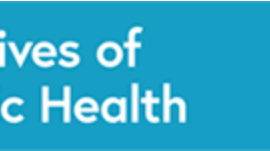
Nienke M Schutte, Jorgen Stassijns, Miriam Saso, Herman Van Oyen, Petronille Bogaert
Epidemiology and public health, Sciensano, Brussels, Belgium
24 November 2021 | Cross country analysis
When the COVID-19 pandemic hit Europe in early 2020 (Spiteri et al., 2020), the National Public Health Institutes (NPHIs) took on the role of monitoring the spread of the Sars-CoV-2 virus and COVID-19. NPHIs historically have been science-based governmental organizations that serve as a focal point for a country’s public health efforts, as well as a critical component of global disease prevention and response systems (Heymann, 2008). NPHIs mobilized to describe the trends and identify changes in the spread of the SARS-CoV-2 virus, assess the scale and impact of the COVID-19 crisis on population health, and offer scientific evidence for decision-making in relation to non-pharmaceutical and other measures (e.g., testing and diagnostic strategies, guidelines for health care workers and GPs, vaccination, etc.), as far as that evidence was available.
NPHIs provide information about diseases, their causes, their incidence as well as emerging pathogens (bacteria, germs, viruses) or mutations (in the case of Sars-CoV-2). Fortunately, in most NPHIs the routine monitoring and surveillance work already covered infectious diseases, such as influenza, HIV/AIDS, tuberculosis, and salmonella, relying on a network of laboratories, regional centres and other platforms that monitor these diseases. These existing health information systems could be used or extended to also monitor COVID-19, although some countries have set up new data flows or new networks consisting of scientific institutes, laboratories and NPHIs specifically for the tracking mutations of Sars-CoV-2, such as in Spain and Germany. However, the COVID-19 crisis highlighted the critical need to strengthen national health data and information systems (Schmidt et al., 2021) and the related networks of which the NPHIs are part, in order to address the speed at which data had to be translated into information reflecting real-world and real-time data.
The NPHIs should have a crucial role in bringing together and linking data from different sources and translating these data into information, enabling the dissemination of reliable and trustworthy information to the general public, as well as facilitating the systematic and transparent use of the best available research evidence by policy-makers in order to strengthen the health systems’ response and, as a consequence, general population health. This article explores how NPHIs in Europe were involved in monitoring the COVID-19 health crisis.
Read the full analysis from the European Observatory on Health Systems and Policies.


